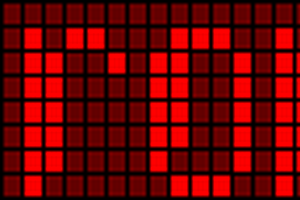RFID stands for Radio Frequency IDentification and it’s a non-contact technology that’s broadly used in many industries for tasks such as personnel tracking, access control, supply chain management, books tracking in libraries, tollgate systems and so on.[/column]
_DXjVaSbAhF.png?auto=compress%2Cformat&w=740&h=555&fit=max)
The RFID reader consist of a radio frequency module, a control unit and an antenna coil which generates high frequency electromagnetic field. On the other hand, the tag is usually a passive component, which consist of just an antenna and an electronic microchip, so when it gets near the electromagnetic field of the transceiver, due to induction, a voltage is generated in its antenna coil and this voltage serves as power for the microchip.
Now as the tag is powered it can extract the transmitted message from the reader, and for sending message back to the reader, it uses a technique called load manipulation. Switching on and off a load at the antenna of the tag will affect the power consumption of the reader’s antenna which can be measured as voltage drop. This changes in the voltage will be captured as ones and zeros and that’s the way the data is transferred from the tag to the reader.
There’s also another way of data transfer between the reader and the tag, called backscattered coupling. In this case, the tag uses part of the received power for generating another electromagnetic field which will be picked up by the reader’s antenna.
_riejyau5OY.png?auto=compress%2Cformat&w=740&h=555&fit=max)
_kuXCW8rJzB.png?auto=compress%2Cformat&w=740&h=555&fit=max)
When power ON this door lock, the servo motor activates and pushes the door lock forward. Also displayed as “Welcome, put your card” on the LCD. Then when the RFID tag is moved closer to the RFID reader, it is scanned. In that case, it is displayed as “scanning” on the LCD. Then, if the RFID tag is correct, the servo motor is activated and the door lock is pulled back. The LCD shows “Door is Open”. When the RFID tag is moved closer to the RFID reader again, if it gets the correct tag, the servo motor will push the lock forward. Displays “Door is locked” on LCD. If a wrong RFID tag is used according to the program, it will be displayed as “Wrong card” on the LCD.
The fingerprint access control systems are preferred only for high security or personal security solutions, are highly personalized, and are costly. The PIN and RFID are cost-effective solutions applicable to public access systems like hotel rooms, classrooms, and offices. Of these two, RFID access control systems come with higher security and offer wider applications. For example, RFID solutions can be used simultaneously for access control as well as attendance in school/college classrooms.
In this project, we are designing an RFID door lock system and will explore how the locking mechanism can be built in different ways.
The read bytes of NUID are stored in a character array. This character array is compared to a predefined NUID using user-defined compareNUID() function. The function returns a boolean value used to determine access control. If the scanned NUID is matched with the programmed ID, a message granting access is displayed on the OLED screen. If the scanned NUID does not match the programmed ID, a message denying access is displayed on the OLED screen.
_vtWsKBfhwP.png?auto=compress%2Cformat&w=740&h=555&fit=max)
When power ON this door lock, the servo motor activates and pushes the door lock forward. Also displayed as “Welcome, put your card” on the LCD. Then when the RFID tag is moved closer to the RFID reader, it is scanned. In that case, it is displayed as “scanning” on the LCD. Then, if the RFID tag is correct, the servo motor is activated and the door lock is pulled back. The LCD shows “Door is Open”. When the RFID tag is moved closer to the RFID reader again, if it gets the correct tag, the servo motor will push the lock forward. Displays “Door is locked” on LCD. If a wrong RFID tag is used according to the program, it will...
Read more »
 J. Peterson
J. Peterson
 Ruslan
Ruslan
 Inter Action
Inter Action